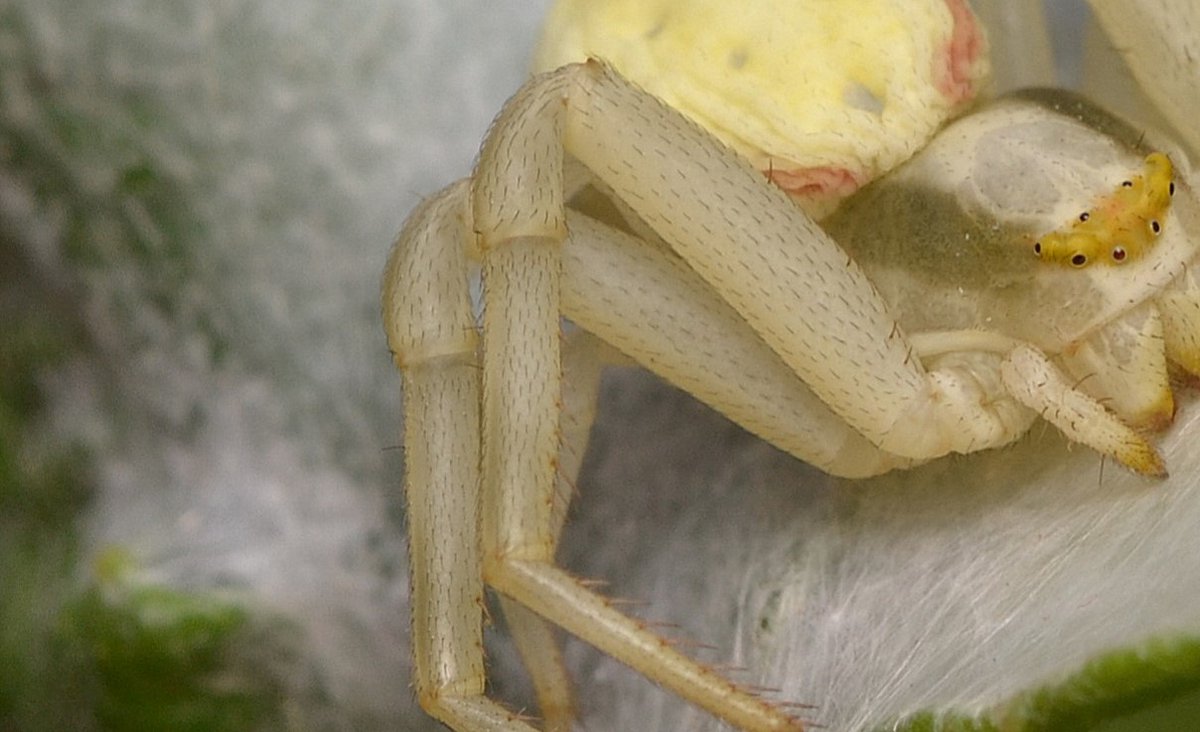Misumena vatia are extremely adept at sensing the presence of a cumbersome human and will quickly scoot under the flower they occupy or abseil to the lower levels as was the case with this spider. #TurnFear2Fascination
#Thread https://abs.twimg.com/emoji/v2/... draggable="false" alt="👇" title="Rückhand Zeigefinger nach unten" aria-label="Emoji: Rückhand Zeigefinger nach unten">
https://abs.twimg.com/emoji/v2/... draggable="false" alt="👇" title="Rückhand Zeigefinger nach unten" aria-label="Emoji: Rückhand Zeigefinger nach unten">
#Thread
I believed that the reason they sensed my approach was because of my shadow cast on a hot sunny day but still they would scarper even when I approached from a different direction.
Maybe the super sensitive hairs that cover the spiders body were coming into play. M.vatia may seem quite hairless at first glance but a close up shows the opposite.
Now, I appreciate that these hairs are a wonder of nature in their capacity to detect the disturbed air current created by a flying insect several cm& #39;s away but I do have my reservations as to whether they can detect me from 2 or 3 feet away.
M.vatia have tiny eyes and for a long time I assumed that they, at best, could detect light and dark unlike the active hunters, the Salticids and Lycosids with their impressively large eyes.
It was whilst photographing M.vatia in the field that I would notice the spiders principal eyes, the anterior medians change colour from black to red and visa versa.
The colour change that I was seeing through my camera were the eye tubes moving and taking in their surroundings. Interestingly, the tubes can be adjusted independently of each as these photos show.

 Read on Twitter
Read on Twitter " title="Misumena vatia are extremely adept at sensing the presence of a cumbersome human and will quickly scoot under the flower they occupy or abseil to the lower levels as was the case with this spider. #TurnFear2Fascination #Thread https://abs.twimg.com/emoji/v2/... draggable="false" alt="👇" title="Rückhand Zeigefinger nach unten" aria-label="Emoji: Rückhand Zeigefinger nach unten">" class="img-responsive" style="max-width:100%;"/>
" title="Misumena vatia are extremely adept at sensing the presence of a cumbersome human and will quickly scoot under the flower they occupy or abseil to the lower levels as was the case with this spider. #TurnFear2Fascination #Thread https://abs.twimg.com/emoji/v2/... draggable="false" alt="👇" title="Rückhand Zeigefinger nach unten" aria-label="Emoji: Rückhand Zeigefinger nach unten">" class="img-responsive" style="max-width:100%;"/>












